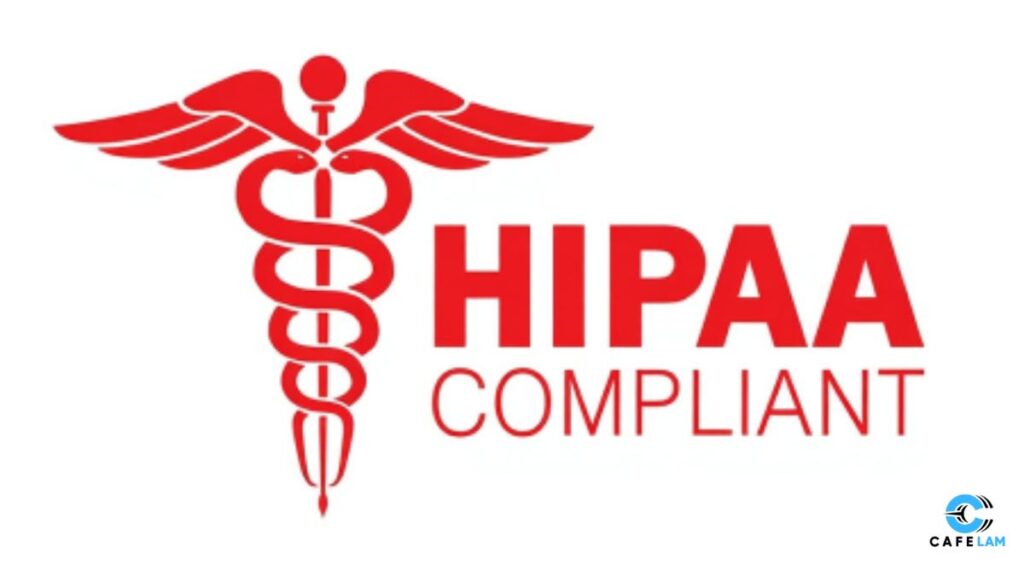The healthcare industry is at the center of a massive digital transformation. From electronic health records (EHRs) and telehealth to AI-driven diagnostics and remote patient monitoring, data has become the lifeblood of modern care delivery. With this transformation comes a growing responsibility: patient data protection. While regulations like HIPAA provide a strong compliance framework, they are not enough to address the evolving threats of ransomware, phishing, and insider misuse on their own.
Patients today expect not just high-quality medical care but also secure healthcare communication that respects their privacy. A single breach can compromise sensitive information, such as Social Security numbers, insurance details, and medical histories, leading to identity theft, fraudulent billing, or even compromised health outcomes. To truly protect patients, healthcare organizations must go beyond compliance and implement a holistic strategy that prioritizes security, trust, and patient engagement.
Importance of Patient Data in Modern Healthcare
Patient data is more than just information stored in a chart; it’s the foundation of care delivery. Physicians rely on accurate and timely data to diagnose conditions, coordinate treatments, and monitor long-term health outcomes. For example:
- Care coordination: Multi-disciplinary teams depend on shared data to deliver seamless care across departments and facilities.
- Chronic disease management: Remote monitoring of diabetes, hypertension, or heart conditions requires constant, secure data transmission.
- Population health initiatives: Aggregated data helps public health officials identify care gaps, vaccination trends, and preventive care needs.
However, this data-rich environment also creates vulnerabilities. Cyberattacks on hospitals and health systems have grown at alarming rates. Healthcare data breaches increased by more than 250% in the last decade, with millions of patient records exposed annually. These attacks don’t just hurt organizations financially; they erode patient trust and can delay critical treatments.
The message is clear: complete patient data protection is essential not only for compliance but also for patient safety, satisfaction, and healthcare credibility.
Core Principles of Complete Patient Data Protection
Going beyond HIPAA requires more than checking regulatory boxes. Organizations must adopt a framework rooted in four key principles:
- Confidentiality – Ensure that only authorized individuals, clinicians, administrators, and approved partners can access sensitive patient records. Encryption and role-based access control are vital.
- Integrity – Safeguard against unauthorized alterations to patient data. A misfiled or tampered medical record could lead to misdiagnosis or inappropriate treatment.
- Availability – Keep data accessible when it’s needed most. Downtime during a cyberattack or system failure can disrupt emergency care and put lives at risk.
- Accountability – Track all user activities and access logs for auditing purposes. Transparency fosters trust and enables prompt responses when security incidents occur.
When these principles are embedded into workflows, healthcare organizations establish a security-first culture that reinforces both regulatory compliance and patient trust.
Key Strategies to Ensure Patient Data Protection
1. End-to-End Encryption & Secure Messaging
Traditional communication methods, such as email or SMS, leave patient information vulnerable to interception. End-to-end encryption in healthcare ensures that messages, images, and files remain unreadable to anyone except the intended recipient. This approach is particularly crucial for telehealth, lab result sharing, and prescription coordination.
Secure messaging platforms also provide real-time, HIPAA-compliant communication between clinicians and patients. Unlike generic messaging apps, these solutions prevent data leakage by ensuring information cannot be copied, forwarded, or accessed outside the approved ecosystem. By integrating encrypted communication into everyday workflows, providers eliminate one of the biggest vulnerabilities in patient communication.
2. Strong Identity & Access Management
Human error and weak security policies are significant contributors to data breaches. Strong identity and access management (IAM) reduces risks by implementing:
- Multi-factor authentication (MFA): Verifies user identity with more than just a password.
- Role-based access controls (RBAC): Limits access to patient data based on job function, ensuring staff only see what they need.
- Continuous monitoring: Tracks unusual login attempts or unauthorized access.
- Regular access audits: Quickly revoke credentials for former employees or inactive accounts.
This strategy not only reduces insider threats but also protects organizations against credential theft, one of the leading causes of healthcare data breaches.
3. Data Minimization & Secure Storage
The more data stored, the greater the potential attack surface. By following data minimization principles, organizations can minimize exposure by collecting and retaining only what is absolutely necessary. Examples include limiting intake forms to essential fields and securely archiving outdated records.
Additionally, secure storage solutions, whether on-premise or cloud-based, must include encryption at rest, automated backups, and robust disaster recovery capabilities. Healthcare organizations must prepare for ransomware attacks and natural disasters alike by ensuring that patient records remain accessible without compromise.
4. Advanced Patient Engagement Tools
While security is paramount, it cannot come at the cost of patient convenience. A modern patient engagement solution combines usability with rigorous compliance. Key features include:
- HIPAA-compliant forms for digital intake and procedure prep.
- Secure e-signatures that replace vulnerable paper processes.
- Virtual visits and telehealth platforms with built-in encryption.
- AI-powered chatbots that provide reminders, education, and follow-up without exposing personal data.
For patients, these tools create a seamless experience scheduling appointments, accessing records, or chatting with care teams, all while ensuring their data is protected. For providers, automation reduces workload and eliminates risky manual processes.
Choosing the Right Technology Partner
Even with the best internal policies, achieving complete healthcare cybersecurity requires trusted technology partners. Organizations should look for platforms that offer:
- HIPAA Compliance and Beyond – Security That Meets and Exceeds Regulations.
- App-less communication – Reducing friction for patients by allowing secure communication without requiring app downloads.
- Modular and scalable solutions – Flexibility to address ambulatory, inpatient, outpatient, and post-acute needs.
- Seamless EHR integrations – Compatibility with Epic, Cerner, athena, NextGen, and other major systems.
This is where QliqSOFT’s Quincy Digital Engagement Platform excels. Quincy is built as a secure, app-less, modular platform designed for modern healthcare. It combines end-to-end encrypted communication, HIPAA-compliant forms, secure virtual visits, and AI-powered chatbots into one ecosystem.
Quincy has already delivered measurable results:
- 32% reduction in readmissions in inpatient settings.
- 36% reduction in no-shows for outpatient procedures.
- 30% reduction in patient intake time for post-acute care.
- 24% increase in clinic revenue for ambulatory settings.
By uniting security and patient engagement, QliqSOFT ensures providers not only protect data but also enhance patient outcomes and operational efficiency.
Conclusion
As healthcare moves deeper into the digital era, protecting patient information must extend beyond HIPAA compliance. A comprehensive strategy for patient data protection requires encryption, secure messaging, strong identity management, data minimization, and patient-centered engagement tools.
By selecting technology partners that prioritize both security and usability, healthcare organizations can bridge communication gaps, protect sensitive information, and deliver a trusted patient experience. Platforms like QliqSOFT’s Quincy make it possible to balance compliance, convenience, and care quality, ensuring that providers truly go beyond HIPAA in 2025 and beyond.







